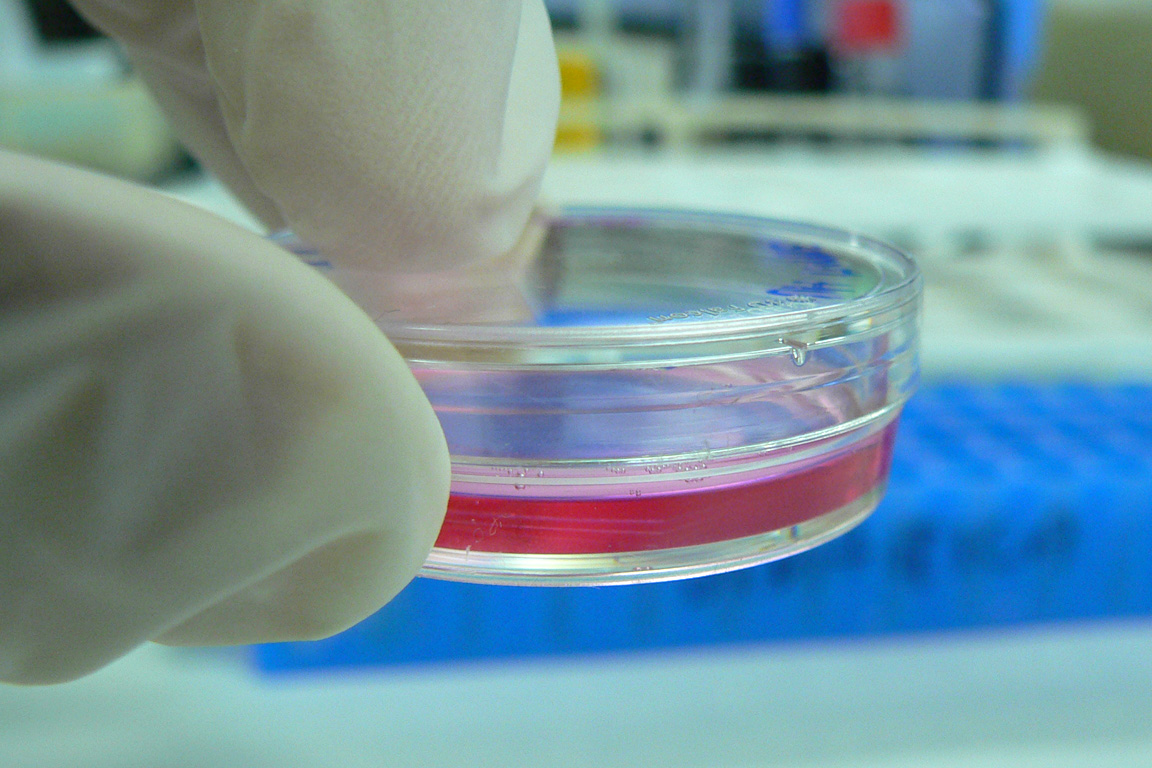
Integrated Electronics and Biointerfaces Laboratory, UC San Diego
Miniature brains the size of a pea are sending out brainwaves for the first time
Are they fetal brains in a jar? No. Should we still be excited and slightly concerned? Yes.
We are in a boom of organoids. New and exciting advancements are approaching quickly with these tiny, model organs. Perhaps the most intriguing: the brain organoid. First described in 2013, these so-called "mini-brains" have been used to model and study genetic diseases, major psychiatric disorders, neurodegenerative diseases such as Alzheimer’s Disease, and even human evolution.
Mini-brains are just the size of a pea but capable of reproducing key brain functions. They are currently a hot research topic because scientists think they can eventually be a model for neurological diseases that we are currently not able to properly study in rodents or other animals.
While previous studies have successfully shown changes in genes and proteins associated with such diseases, studying the functionality of diseased brains — how our neurons work and interact with other cells during disease — remains a challenge. Neurons communicate by sending electrical signals to other cells, so to fully understand how they work, you must study how the cells are performing electrically. Scientists already knew that mini-brains were capable of generating these electrical signals, called spontaneous action potentials, but there is a wide gulf between simple action potentials and complex thoughts.
Action potentials in the brain happen in defined frequencies, called neural oscillations, or brainwaves. Different frequencies of brainwaves are associated with different mental states (for example, when you are in deep sleep, your brainwaves oscillate at about 1-4 times per second). Brainwaves are also associated with different diseases. So in order for brain organoids to become the improved disease model that scientists need, they must be able to produce brainwaves and other electric activity. Diseases like Alzheimer’s and schizophrenia are complex, and in many cases, there are more subtle changes in electrical activity happening in the brain before there is tangible damage to neurons.
Now, a recently published paper has found that the mini-brains are indeed capable of developing brainwaves. The authors, led by Cleber Trujillo, (and including Dr. Alysson Muotri, whose work on mini-brains in space was previously profiled on Massive), recorded the electrical activity in brain organoids over a period of ten months. Other studies using organoids have generally focused on the first few months of organoid development, because by two months the mini-brains have a defined structure and stop growing. But this new study shows that the longer the organoids were maintained, the more complex their cell composition — and the more intricate the electrical activity of the neurons — became.

"The Brain That Wouldn't Die"
Trujillo and colleagues showed that at four months, the organoids displayed slow brainwaves, similar to the ones that our brains produce while we are sleeping. They saw that even after they form a structure and stop growing in size, the composition of cell types was still changing, with an increased cell diversity as time went on. It is possible that those changes are correlated to the changes in brainwave patterns.
To evaluate how well these mature brain organoids modeled human brains, the researchers then compared the organoids' brainwaves to electroencephalograms (EEGs, brain scans) of premature babies. They used a machine learning algorithm that was trained using babies’ brainwave data, and then applied that to the organoids. Some specific measures of brain function, such as spontaneous activity transients (bursts of activity in the brain that are integral in developing more complex neural connections), from the premature babies were very similar to those from the organoids, especially at later time points of organoid culture. In other words, after growing for up to 10 months, the organoids started to have an electrical activity that resembled a fetal brain.
For the first time ever, we now have brain organoids that not only mimic a fetal brain in structure and cell composition, but also in some brain functions. This raises complicated ethical issues, and it is fair to wonder if we can take the study of brain organoids too far. Some philosophers and scientists are concerned about the fact that we might be able to create consciousness in a lab in a not-so-far future. The ethical and moral conversations surrounding these scientific advances should start now. We are living through times where technologies evolve much faster than the ethical discussions around them, and we must prevent irresponsible applications of these technologies.

Umberto Salvagnin via Flickr
One idea to prevent scientists from crossing moral and ethical lines with organoid research is to apply a tool called the Perturbational Complexity Index (PCI) to the organoids. PCI has not yet been thoroughly validated in humans but has been proposed as a way to test brain activity in comatose and unconscious patients. By using something relatively harmless such as transcranial magnetic stimulation (a way to stimulate the brain using a magnetic coil), physicians and scientists can temporarily disrupt the normal activity of the brain and measure how quickly it takes to recover. This can give some indication as to how aware a patient, or in this case an organoid, is.
The grotesque idea of brains in a jar remains, thankfully, in the realm of science fiction. There are plenty of reasons to be excited about where organoid research is are going. As with other studies that look into disease mechanisms, this opens the door to new therapies and treatments for the uniquely human neurological diseases that we have not been able to even cure, such as Alzheimer’s, Parkinson’s and schizophrenia for instance. The field of organoids is somewhat special, requiring inputs from different specialists to ensure that we are ethically and responsibly unleashing all the potential of these miniature organs, to hopefully help patients worldwide.




I think we’re definitely on an organioid kick here at Massive! I love these stories. As I was reading, my first thought was crossing the ethical barriers that you finish the story with Thiago. These progressions are huge and greatly needed for neuroscience research, but like AI and a host of other “once science fiction, now reality” ideas, this needs to be governed closely by organizations and forces that are not yet formed. But, they are coming down the pipeline.
Overall, I thought this was a fascinating article, and liked the connection back to a previously-Massive-interviewed neuroscientist and researcher. It was nice that there was some background to go back to after reading this story, if you were interested in learning more. Good use of descriptions made this story easy to follow for scientists and non-scientists alike! It’s important that we make this extremely interesting but somewhat complex and hard-to-follow work understandable for everyone outside of the field, as well as those in the thick of it. Everyone deserves to know about these leaps and bounds being made, and appreciate the benefits this will have for neuroscience research, which currently rely primarily on cell lines (which are fine, but don’t function like an intact human brain) and animal research, coming with a significant number of its own problems.
I look forward to reading more on this topic, in addition to more Massive pieces from you Thiago. Excellent read.